Assad’s rule collapses in Syria, raising fears of a vacuum
The rebels who led a stunning offensive against the Assad regime called for a ‘free and proud’ Syria while the president they labelled a ‘tyrant’ fled to an unknown destination.

The Assad family dictatorship that ruled Syria for more than 50 years spiralled towards collapse Sunday, with rebel forces claiming control of Damascus and the whereabouts of President Bashar al-Assad unknown.
The events set off celebrations among the long-repressed population but also sparked concerns about how the disintegration of the regime would reverberate in the region.
Rebel forces poured into the capital overnight, just over a week after launching a campaign that swept through Syria’s biggest cities with lightning speed.
Assad fled in the early hours of Sunday local time, according to two Syrian security officials. His destination is unknown, they said.
The government had survived more than a decade of civil war and economic crisis, but its forces caved under the pressure of the fast-moving advances by various rebel groups closing in from the north, south and east.
The Syrian rebels issued a statement that was read on state TV, saying: “Long live Syria, free and proud for all Syrians of all sects.”
“The city of Damascus has been liberated, the tyrant Bashar al-Assad has been overthrown, and all unjustly detained prisoners have been released from the regime’s prisons,” the rebels said in the statement, which also called on people “to preserve all properties of the free Syrian state”.
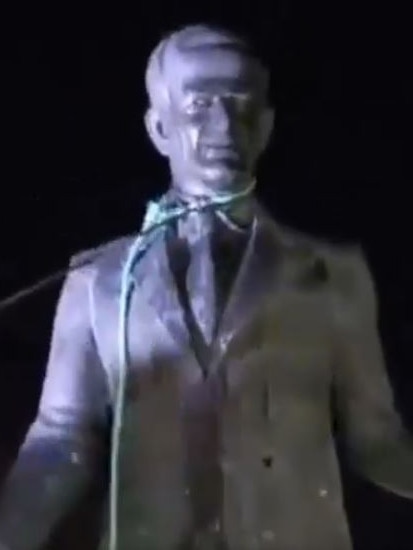
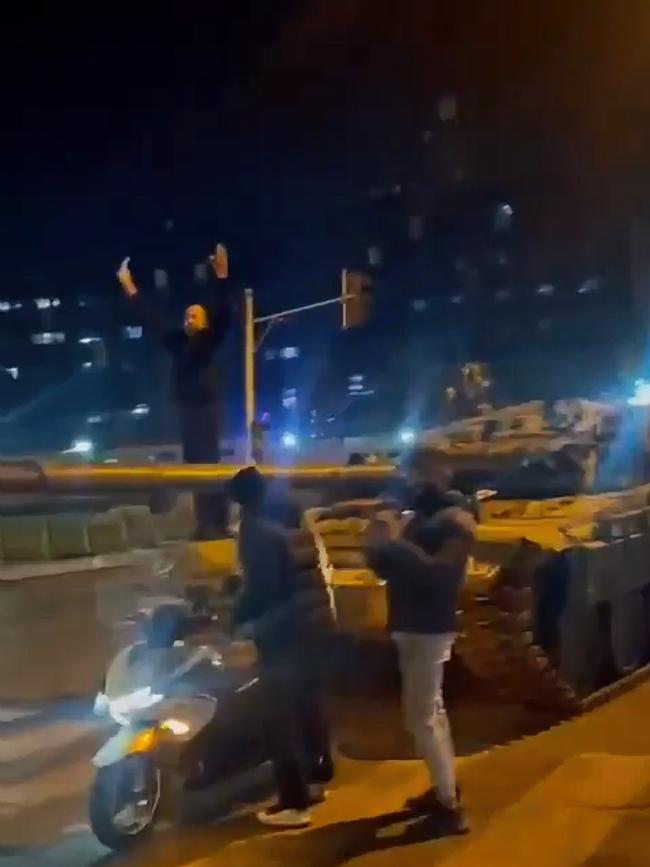
The government had survived more than a decade of civil war and economic crisis, but its forces caved under the pressure of the fast-moving advances by various rebel groups closing in from the north, south and east.
The fighting was the latest dramatic turn in a series of interlinked conflicts that have roiled the Middle East for more than a year — all stretching back to Hamas’s October 7, 2023, assault on southern Israel that sparked the war in the Gaza Strip and then spread to Lebanon and Iran.
The Assads’ government fell victim in part to the wars in Lebanon as well as in Ukraine, which sapped the strength of Russia and Iran-backed Hezbollah, two key sponsors whose militaries had kept the family in power.
Iran, Russia, Turkey, Israel, Arab governments and the US — which has at least 900 troops in the country — are all closely watching events unfold, concerned that deeper disorder in the strategic Middle East country could undermine their own interests. There is concern that a rapid collapse of the regime without planning for succession could create a dangerous vacuum with spillover effects into neighbouring countries.
US president-elect Donald Trump said on Sunday that Assad had “fled his country” after losing the backing of Russia.
“Assad is gone,” he said on his Truth Social platform. “His protector, Russia, Russia, Russia, led by Vladimir Putin, was not interested in protecting him any longer.
“There was no reason for Russia to be there in the first place. They lost all interest in Syria because of Ukraine, where close to 600,000 Russian soldiers lay wounded or dead, in a war that should never have started, and could go on forever.”
The campaign that led to the Assad regime’s downfall was kicked off by Hayat Tahrir al-Sham, a US-designated terrorist group commanded by Abu Mohammed al-Jawlani, who previously had links to Islamic State and al-Qaeda. Jawlani has cut those ties and has pledged to protect Syria’s religious and ethnic diversity, but it’s unclear to what extent his transformation is genuine.
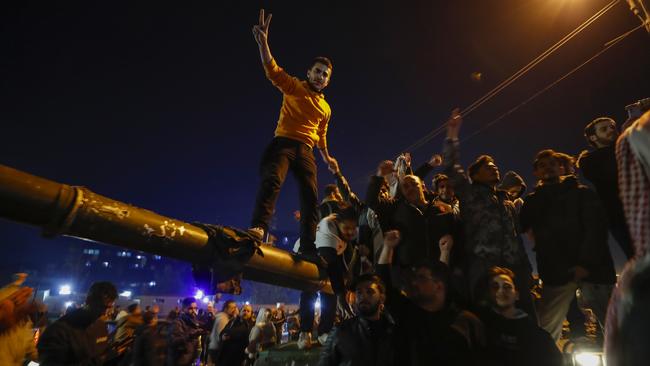
The Assads were reviled but preserved a rough balance of power for years in a country divided by a host of sometimes-antagonistic rebel groups and under pressure from outside powers including Turkey, Russia and Iran.
In recent days, neighbouring countries rushed to solidify their borders to prevent possible spillover from the conflict.
Israel said it deployed its military on Sunday in the buffer zone between Israel and Syria in the Golan Heights. It said the move was necessary to defend its border.
Russia’s embassy in Egypt was among the first to give an official response to the rebel advance on the Syrian capital, saying Damascus had “been captured by terrorists, who are backed by external forces led by the United States”.
“They stubbornly want to destroy the Syrian state and destabilise the entire Middle East, bringing more suffering to the Arabs,” the Russian Embassy said in a post on X. The US has said it had nothing to do with the rebel offensive.
Assad had said he would address the nation at 8pm local time on Saturday, but the speech never occurred. His whereabouts couldn’t be determined.
People close to the Syrian government were hiding from the fighting in Damascus as rebels rolled through the capital, said an official close to the Assad family.
“It is chaos. We are all under the tables,” he said. “There is shooting outside in the streets.”
Lieutenant Colonel Hassan Abdul Ghani of the rebel military command said in a social media post early on Sunday local time: “We declare the city of Damascus free from the tyrant Bashar al-Assad.”
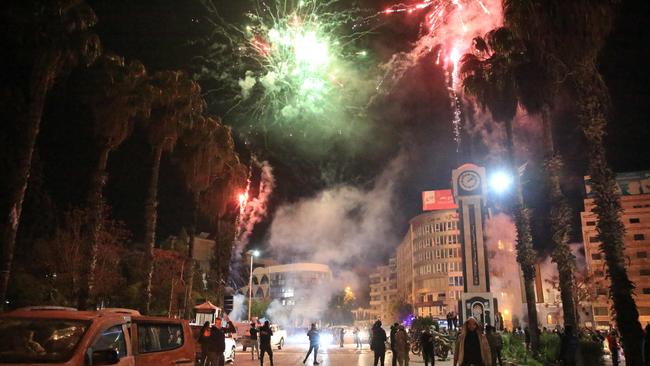
Just hours earlier on Saturday, the rebels said they had seized Homs, a city of 800,000 people that has provided access to Assad’s stronghold in Syria’s coastal areas, where Russia maintains military bases.
“We are in the final moments of Homs’s liberation,” said Abu Mohammed al-Jawlani, the leader of Hayat Tahrir al-Sham, which is spearheading the rebel advance. He urged fighters to show mercy and protect those who surrendered.
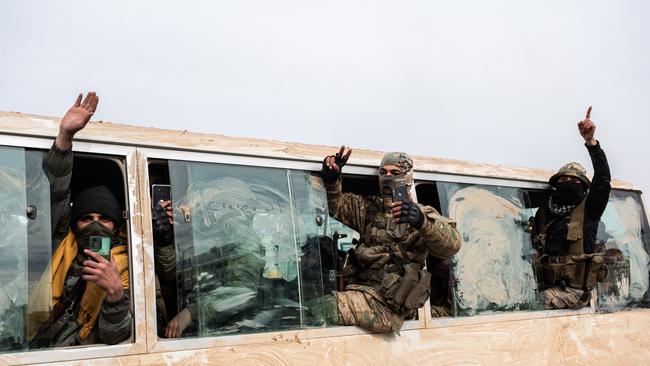
Syrians driven into exile by the civil war celebrated its fall. Footage purportedly from the city showed residents tying a noose around a statue of Assad’s father, Hafez al-Assad, who led Syria for three decades, and toppling it.
Regime forces had said they had created an unbreakable security cordon around Damascus, but it broke down quickly under pressure from the north, where Hayat Tahrir al-Sham had entered, and from the south, where a separate group of rebels had taken up positions in the capital’s suburbs.
“We made it, we won. We are finally a free country,” said Abdulkafi Alhamdo, an English teacher from Aleppo who recently returned to the city after leaving it in 2016.
As the rebels closed in on Homs, Syrian security agents set documents on fire on the roof of the main intelligence branch before vacating it, said Rim Turkmani, whose friends in the city witnessed the activity from their balconies.
Syrians driven into exile by the civil war were celebrating the fall of Homs, which was at the heart of the uprising against Assad. Footage purportedly from the city showed residents tying a noose around a statue of Assad’s father, Hafez al-Assad, who led Syria for three decades, and toppling it.
In the capital earlier, the streets were nearly deserted and supermarket shelves were empty, one resident of the city said. Terrified regime supporters fled toward the coastal areas in vehicles crammed with their belongings. Occasional explosions could be heard from the city’s outskirts.
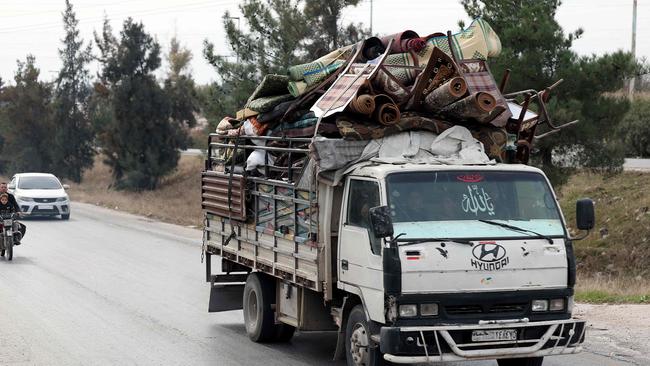
Syrian rebels released hundreds of detainees from a prison dubbed the “human slaughterhouse” after seizing the facility on their march to the capital.
As many as 13,000 people were executed in the notorious Saydnaya prison in the first six years after the uprising in 2011, according to Amnesty International. Many others were killed after being repeatedly tortured and systematically deprived of food, water and medicine.
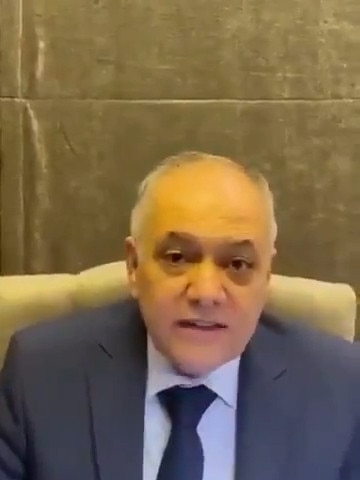
Both Russia and Iran have signalled to the Syrian leader that they can’t or won’t intervene to save his regime, according to people familiar with US intelligence analysis. One possibility, they added, is that Assad flees to the coastal region of Latakia.
At the same time, one of the people said, the Hayat Tahrir al-Sham rebels, with 25,000 fighters, don’t appear to have the personnel to control and govern the vast territories it has gained in recent days.
The foreign ministers of Russia, Iran and Turkey met on the sidelines of a conference in Qatar to discuss a diplomatic path through the fighting as disparate rebel forces pressed their advance.
The past year’s fighting between Israel and Iranian allies such as Hamas and Hezbollah has upset the power dynamics that had maintained a rough stasis in Syria. The conflict had largely fallen off the radar, as Western governments focused on new crises and Arab governments re-embraced Assad last year.
Iran and Russia have yet to come to Assad’s rescue as they did in 2015, when they helped him crush the uprising with air power and proxy forces. Russia is occupied with its war effort in Ukraine, while Iran and the militias it backs have been hammered by an Israeli air and ground campaign in Lebanon and strikes in Syria in recent months.
Tehran told Assad this past week that help for his regime would be limited, blaming his forces for retreating, Arab officials briefed on the conversations said. Iran has pulled senior commanders stationed in eastern Syria out of the country, people familiar with the matter said.
With regime forces melting away, Russia appeared unlikely to bail Assad out, said Michael Kofman, a senior fellow at the Carnegie Endowment for International Peace, a US think tank. Moscow might focus on cutting a deal to retain two bases on the Mediterranean coast that enable it to project power across the region.
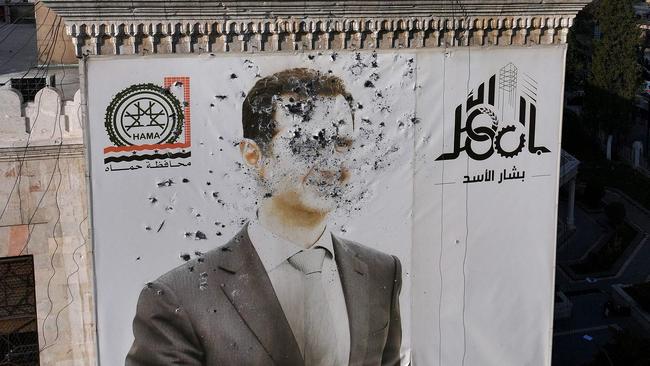
“Iran and Russia … like Hezbollah, are also significantly weaker than they were back then,” US Special Envoy Amos Hochstein said at the Doha Forum in Qatar, where US officials were set to meet Arab partners to discuss the Syria crisis.
Turkey, a North Atlantic Treaty Organisation member that backs the rebels and previously sent its own troops across the border, stands to gain significant sway in Syria.
The meeting in Qatar sought to get the Russians, Iranians and Turks to agree about where the situation in Syria is headed and what they expect from each other, said Vali Nasr, a professor at the Johns Hopkins University School of Advanced International Studies and a former senior State Department adviser. The fate of Assad and a transitional government is likely to be discussed, he said.
“If no agreement is reached between these countries — which appears unlikely at this stage — continued fighting will likely remain the only path forward,” said Haid Haid, a consulting fellow with the Middle East and North Africa program at Chatham House, on X. “In such a scenario, the next major battleground after Homs is expected to be Damascus.” Qatari Prime Minister Sheikh Mohammed bin Abdulrahman Al Thani said there was an urgent need to devise a political framework for the developments in Syria.
“Our worry is that this will bring us back to the old cycles of internal violence, the civil war, and this is what really threatened the integrity, the territorial integrity, of the state of Syria,” he told the annual policymaking forum in Qatar, a US ally also close to Turkey that has armed some Syrian rebel groups and maintains relations with Iran and Russia.
He accused Assad of wasting the opportunity to reconcile with the Syrian people when hostilities had ebbed previously.
“We might see a big, quick victory, and then the problems start,” said a Western diplomat focused on Syria, pointing to the infighting and fractions in Libya that followed the toppling of that country’s longtime ruler, Muammar Gaddafi, in 2011.
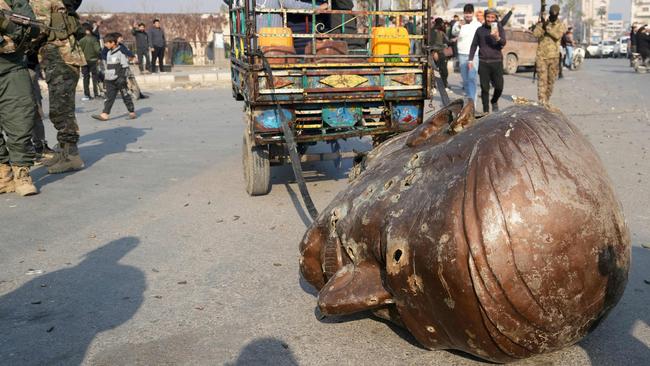
At a Sheraton in Doha, which has hosted mediation efforts for previous Middle East conflicts including those in Libya and Lebanon, senior officials from opposing world powers huddled in adjacent hotel rooms to compare notes on quick-moving battlefield developments in Syria.
The festering conflict was reignited two weeks ago when rebels led by Hayat Tahrir al-Sham, which is a US-designated terrorist group, burst out of the pocket of territory under their control in northwestern Syria. The rebels began their assault on Homs, the last major city on the road to Damascus from the north, after overrunning Aleppo and Hama.
The speed of their advance has been enabled by what Hochstein, the US envoy, described as a “spectacular collapse” of the Syrian armed forces, which have so far failed to mount significant resistance.
If the coast is cut off from the cities farther east, Russia could have to choose between supporting Assad or focusing on maintaining its strategic foothold in Syria. “That’s a choice that is hanging right now, ” said Marie Forestier, senior adviser at the European Institute of Peace.
Rebels on Friday claimed to have taken control of the southern city of Deraa, where the 2011 uprising against Assad erupted after Syrian teenagers who had grafittied antiregime slogans emerged from prison with signs of torture.

The Syrian army said it had “redeployed” forces in the south after rebels attacked army outposts in the Deraa and Sweida governorates. Russian warplanes were bombing rebels north of Deraa, Syrian state television said.
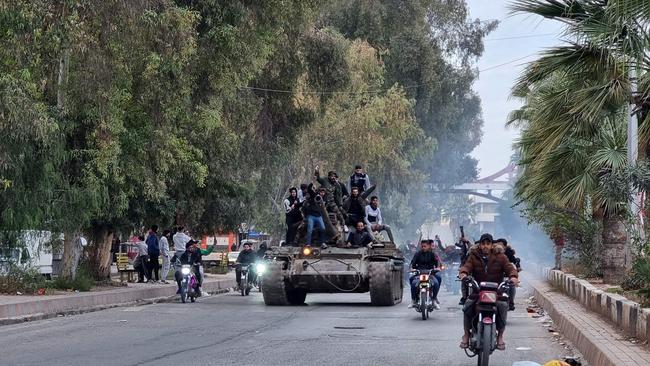
The commander of the Syrian Democratic Forces, a US-backed, Kurdish-led armed group that controls much of northeastern Syria, hailed the rebel advance on Damascus.
“In Syria, we are living through historic moments as we witness the fall of the authoritarian regime in Damascus. This change presents an opportunity to build a new Syria based on democracy and justice that guarantees the rights of all Syrians,” Mazlum Abdi said on Sunday morning.
On the border with Jordan, Syrian rebels, working with the US coalition at the al-Tanf garrison, seized regime positions and advanced to the historic city of Palmyra as well as Qaryatayn.
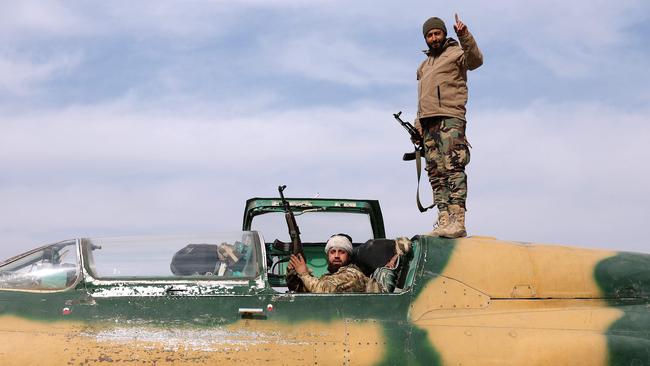
The rebel advance there would prevent Islamic State from exploiting a vacuum left by government forces in the thinly populated desert areas, said Mouaz Moustafa, executive director of the Syrian Emergency Task Force, a Washington-based antiregime advocacy group.
Neighbouring countries have rushed to reinforce their borders to prevent possible spillover. Lebanon’s information minister said the army was deploying forces along the country’s northern and eastern borders with Syria. Israel has said it was reinforcing its forces in the Golan Heights, territory bordering Syria that it has occupied since a 1967 war.
The Wall Street Journal. Additional reporting: AFP

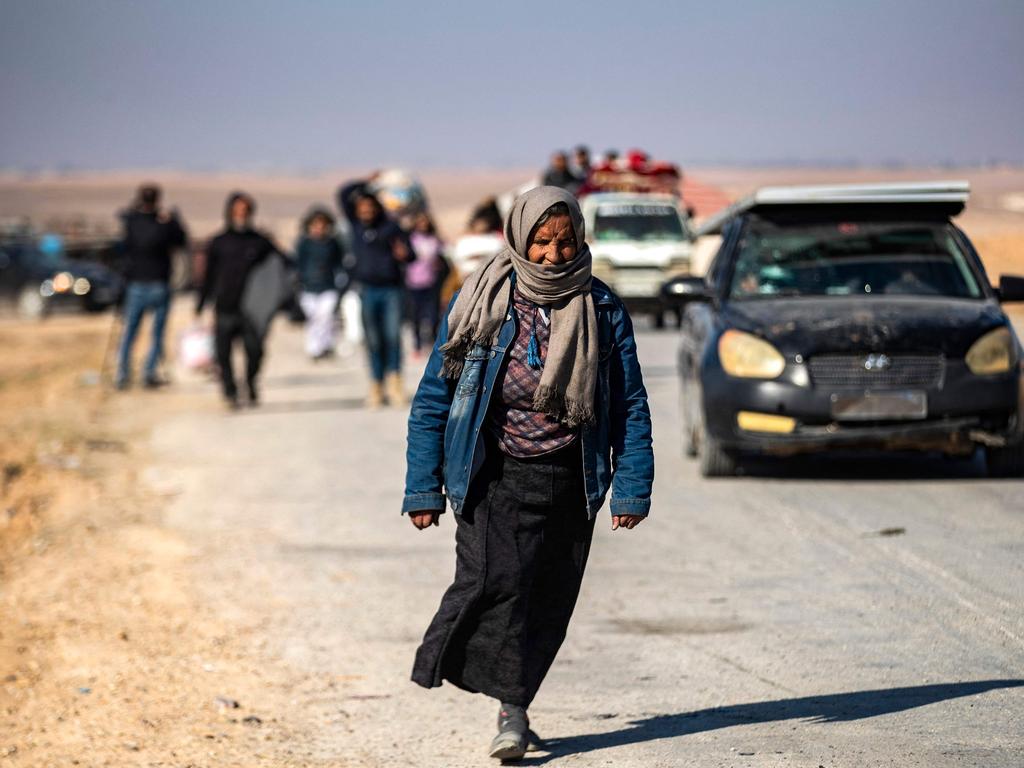


To join the conversation, please log in. Don't have an account? Register
Join the conversation, you are commenting as Logout